Skiing vs. snowboarding: which is easier to learn?
So, you’ve got the urge to ride? Congrats – your life is about to change! But which is easier to learn: skiing or snowboarding? Find the answer in our ultimate guide.
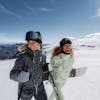
If you’ve got that sudden urge to become a skier or snowboarder, we couldn’t be more proud! Honestly, falling in love with the mountains is pretty life-changing. Though before you can fall for riding, you’ll need to learn how not to fall while riding. Wordplay, eh?
In 2021, 18.1 million U.S. Americans skied versus 7.96 million who snowboarded. But does that mean is skiing more popular than snowboarding because more people can do it? Is it all down to the fact that skiing is easier to learn than snowboarding?
The answer is … not that simple. Whether skiing or snowboarding is easier to learn is a question we’ve been asked countless times. So, we thought it’d be handy to answer it once and for all. Discover our ultimate guide below and the answer to this decades-old question. Then, grab your snowboard jacket and snowboard pants, and get ready to pick your plank (or two!).
Quick find navigation
What should you expect during your first week?
So, you’ve booked your lessons, rented your kit, and you can feel those butterflies. What should you expect? Is it all Pizza and French Fries for skiing? Do you spend most of your time on your butt snowboarding? Don’t worry – we’ll let you in on what to expect during your first week of learning. Spoiler alert: it might just spark a passion that never lets go.
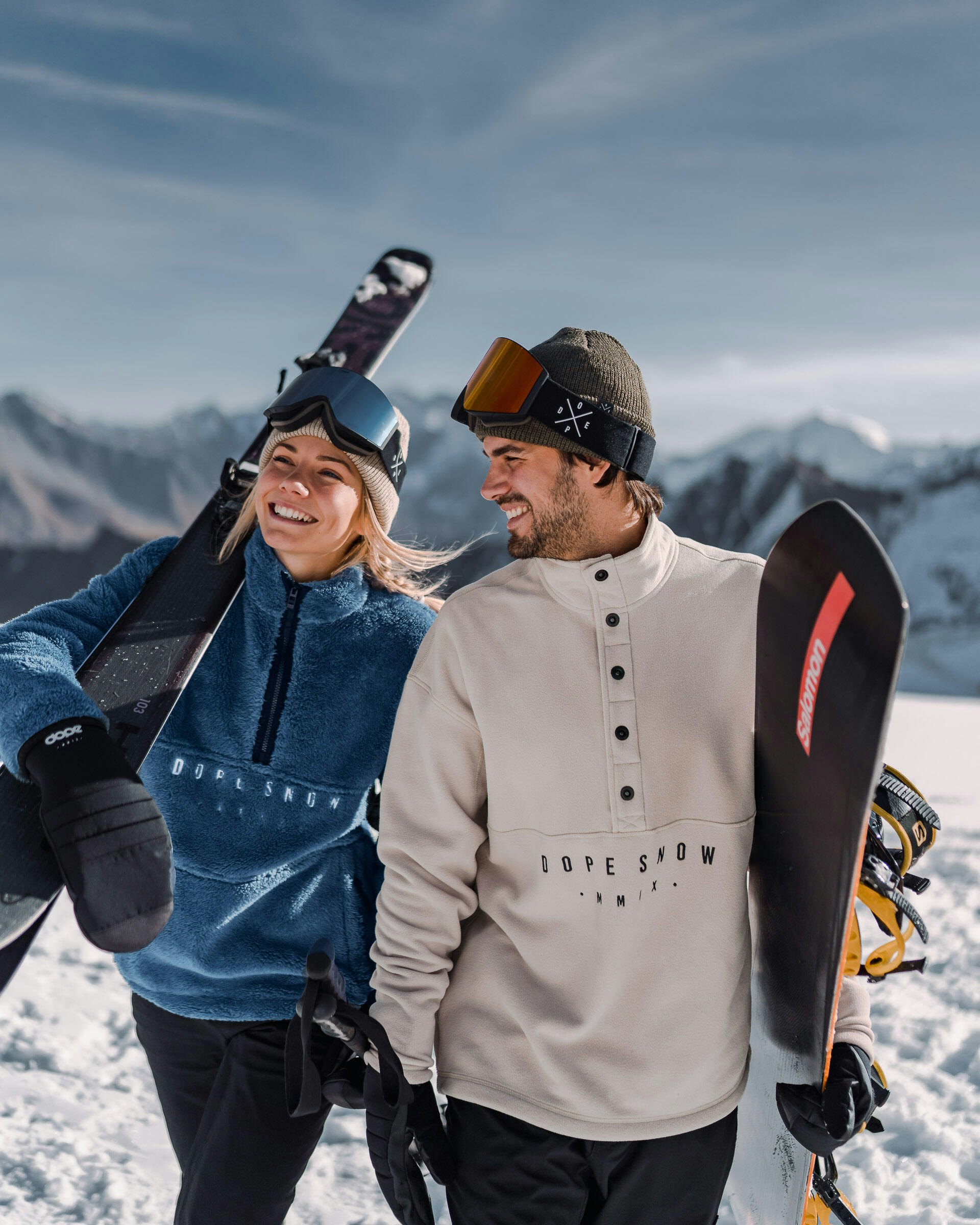
Beginner skiing lessons
Generally, skiing is pretty easy to pick up. If you’ve got an overall grasp of how to control your body, you’ll be able to turn on nursery and beginner slopes within your first week. And maybe even take on a Blue run. Boom!
Learning to ski might just have the edge on snowboarding when it comes to ease because your legs are separated. As the whole thing involves independent leg movement, it’s kind of like learning to walk again – except your legs are attached to skis, of course.
This means it’s often easier to regain balance by adjusting each ski’s position. Also, because you’re front-facing, you’re in a pretty natural stance – you can follow your instructor, keep looking ahead, and have complete peripheral vision.
Let’s look at how beginner lessons might develop:
Up on your feet, getting to grips with snow plough turning. This is where your skis are pointed together like a triangle/pizza slice. You might even master a ski lift or two
These days are about understanding how your body and weight affect your skis – particularly your downhill ski. You’ll work on linking your beginner turns
Those parallel turns might start making an appearance. You’ll also be pretty used to ski lifts by now
Hey, things are falling into place! Those parallel turns are coming along (at speed), and you might even parallel stop. Nice!
Beginner snowboarding lessons
Okay, we’re not going to sugar-coat it: learning to snowboard takes some perseverance. Don’t get us wrong: skiing does too. However, in your first week of snowboarding, expect to catch a lot of edges and spend some time on your behind. Trust us: padded shorts are a godsend!
You fall more when learning on one plank because snowboarding is a bit more alien than skiing at first. That’s because both your feet are attached to one thing, which can feel quite restrictive. You’re also looking sideways, so your peripheral vision is restricted by about 50%. This can all take some getting used to.
For most beginners, it takes a good couple of days to ‘crack’ snowboarding. However, soon you’ll have mastered skating, braking, heel turns, toe turns, and linking those turns. Of course, you can always resort to ‘Falling Leaf’. This is where you apply pressure to either foot to slide right or left on the same edge without pointing your board downhill. It’s a handy technique to make your way down steeper stuff.
Top tip: Prep with padding! Yep, your body will thank you when learning to snowboard. So, armor yourself with padded shorts, knee pads, and wrist guards. Don’t forget to prep with powder, too! Learning and falling on soft snow will be way nicer than hardcore ice.
How quickly can you progress?
Once the basics are in the bag, you can start progressing. And, wow, is this where things get fun. You can climb up the ranks of colored runs (with Double Black Diamond being the most advanced in many resorts) and progress to park laps and off-piste. However – not to sound like your mum – but off-piste is only for riders super confident with their skills, okay?
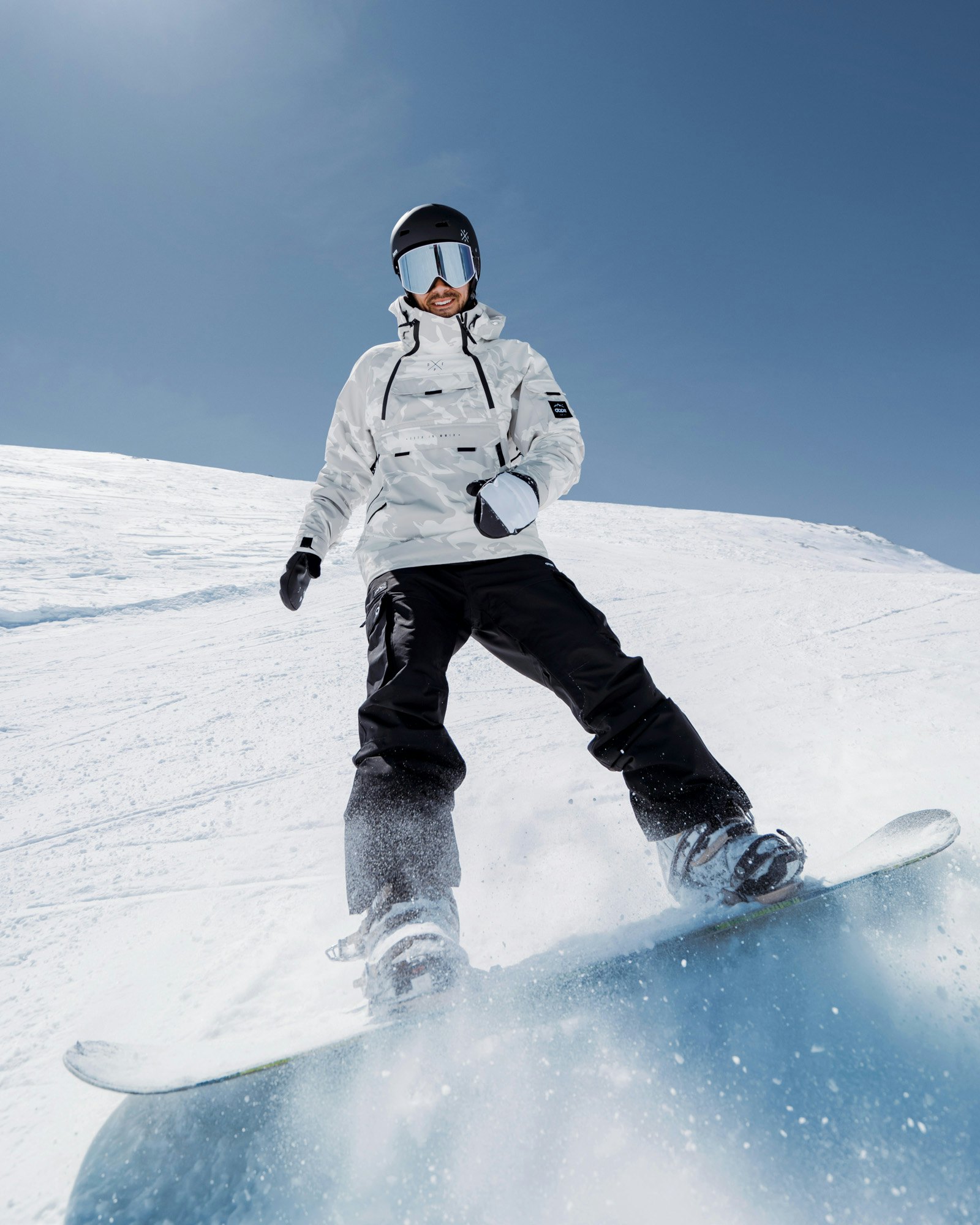
Skiing progression levels
Okay, so you’ve cracked the skiing basics pretty quickly. ‘What’s all the fuss about?’ you might ask yourself. However, this is where the challenge cranks up a bit. Yep, progressing in skiing is often trickier than most expect.
‘Why is that?’ we hear you ask. Well, it often comes down to making symmetrical moves with your legs. We know we said having separated legs makes learning to ski easier, but it also makes it harder to progress. Annoying, right?
Coordinating your legs and progressing from snow ploughing to parallel turns is often challenging. After that, you have the tricky task of facing your torso down the fall line while your legs carve beneath you. This is where an intermediate skier is likely to plateau. Sorry to break the news, but mastering technical skills as a skier can take years to achieve. But hey, you know what they say about good things coming to those who wait …
Snowboarding progression levels
Snowboarding, on the other hand, is often trickier to learn – but easier to progress. Soon, riding sideways becomes second nature, and an intermediate snowboarder will take on advanced, steeper terrain faster than a skier who started learning at the same time.
The beauty of snowboarding is that from beginner to advanced, the basic skill sets stay pretty much the same – bar some refinement and tweaking, of course. So, once you master that side stance, balance, and linking turns, you’ll be flying – metaphorically and literally once you discover kickers.
Interestingly, linking turns is part of the progression of both skiing and snowboarding. However, this appears at different stages. For example, snowboarders can usually link nice ‘S’ turns down a piste in about two weeks. However, for skiers, smoothly linking turns may can take years.
What about required fitness levels?
A good fitness level will be a major advantage for whichever riding method you choose. For example, standing up after falling will require core and leg strength, while bending your knees for a long period will test those quads!
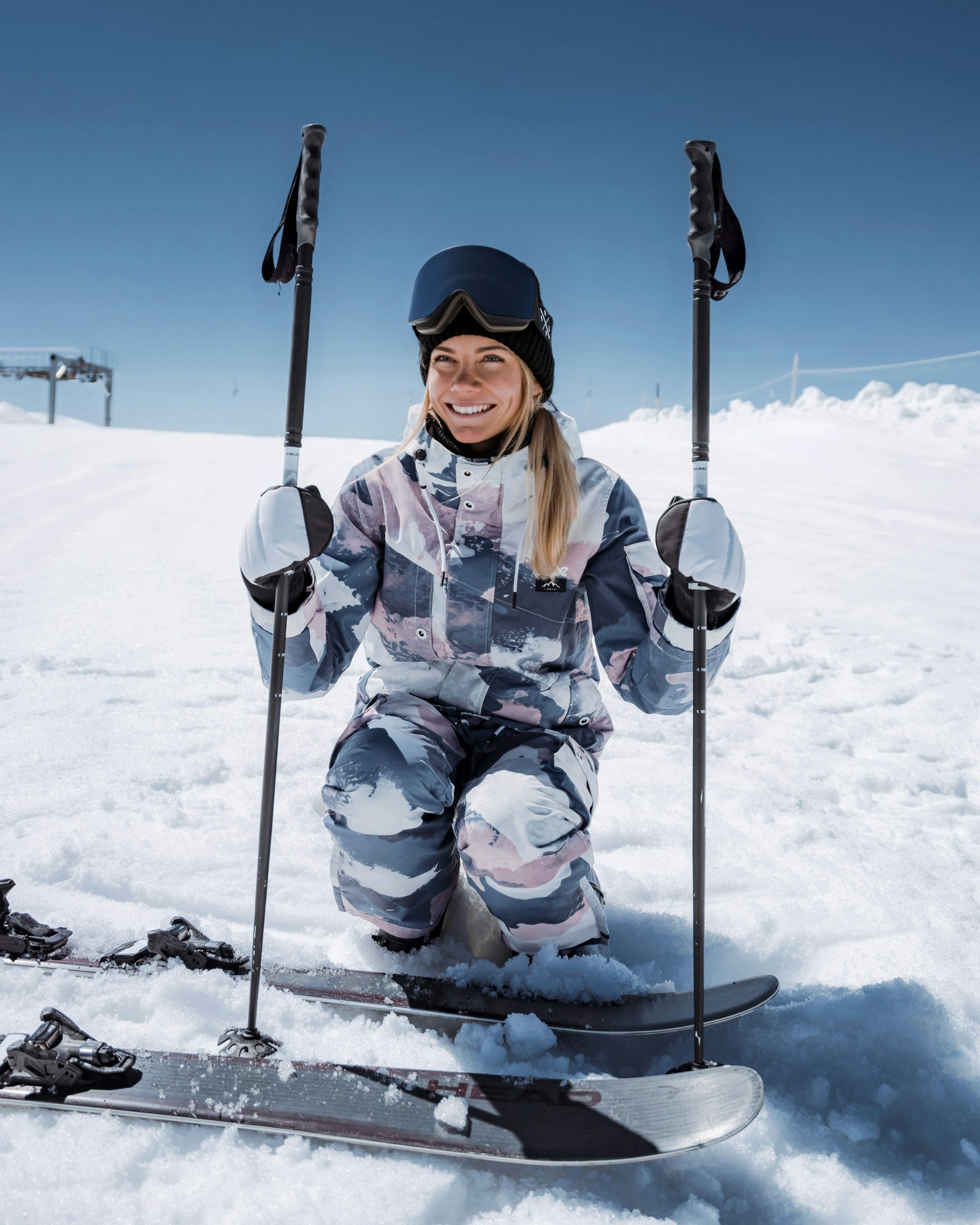
Fitness levels for skiing
There’s no denying it: your legs and thighs will get a workout from skiing! It’s a lot of ‘bending zee knees,’ as the French ski instructors say. And this often puts pressure on the tops of your legs, leading to the inevitable thigh burn. So, prep your legs before getting on the pistes, and your body will thank you. This could be through weight training (squats are king!) or cycling, for example.
Fitness levels for snowboarding
For snowboarding, core strength is an absolute bonus. You’ll definitely need it for standing up from a sitting down position, balancing, and turning. Prep for these long periods of holding a solid position by planking and focusing on exercises that build your core strength.
Which is more comfortable?
Skiing and snowboarding have the same snow jackets, snow pants, goggles, helmets, etc., so you don’t need to worry about buying different kit for each. However, let’s not forget about comfort while on the mountain. Skiers clip into their skis, and they’re good to go. Snowboarders, though, have to unclip and clip in for every lift and at the top of every run. So, if comfort equals ease, snowboarding might lose a few points here. Let’s dive into the comfort of each a little more, though.
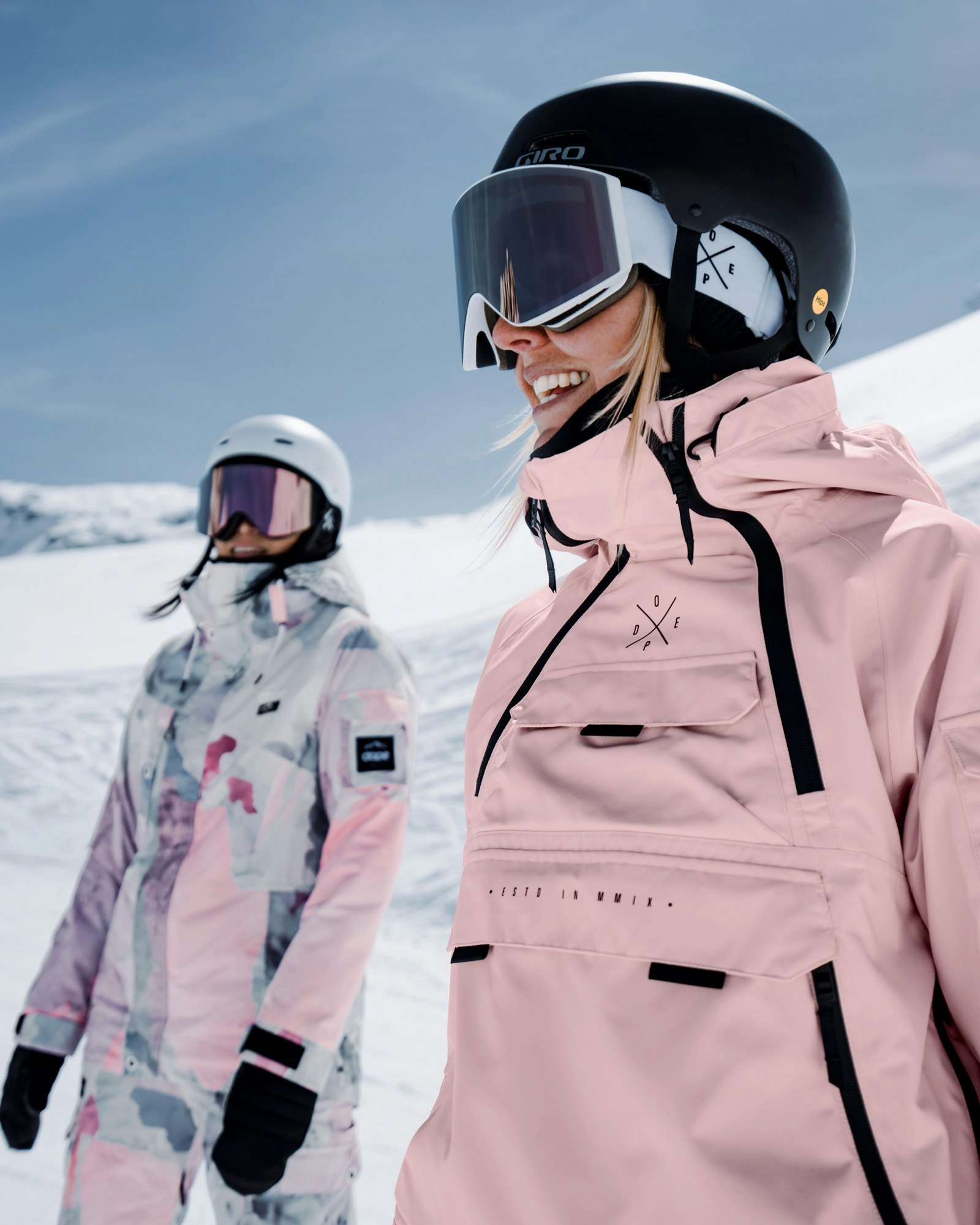
Skiing equipment comfort
Okay, this is where snowboarding claws back the lead over skiing. Yep, it’s all down to the boots! Skiing boots are 100% NOT the comfiest footwear ever invented. Okay, they’re great for holding your feet in place while riding. But, when walking around the resort or heading to après-ski, you’ll wish you had snowboarding boots.
Snowboarding comfort
Snowboarding boots are way comfier than ski boots. There’s also less kit to carry around the resort – it’s just you and your snowboard. With skiing, it’s two skis on your shoulder and your poles in your hand. Trust us: it’s way more to pick up after hitting black ice.
FAQs
How long does it take to ski or snowboard?
Sorry, folks, but there’s no one straightforward answer to this! It totally depends on factors like your fitness level, balance ability, confidence, whether you have lessons, and even snow conditions in resort.
At what age should you learn to ski or snowboard?
There’s no age limit to learning to ski or snowboard! Some people start really young, while others start older. There’s no ‘correct’ time to learn, so don’t ever feel like it’s too late.
Is it more dangerous to learn to ski or snowboard?
Learning to ski or snowboard always comes with some risks. Generally, skiing is harder on the knees, and ACL injuries are more common for skiers than snowboarders.
Snowboarders, though, spend a lot of time falling when learning. This can often lead to wrist, shoulder, and coccyx injuries. However, prep with padding and the right protective gear, and you should be golden (even if your bum is slightly purple).
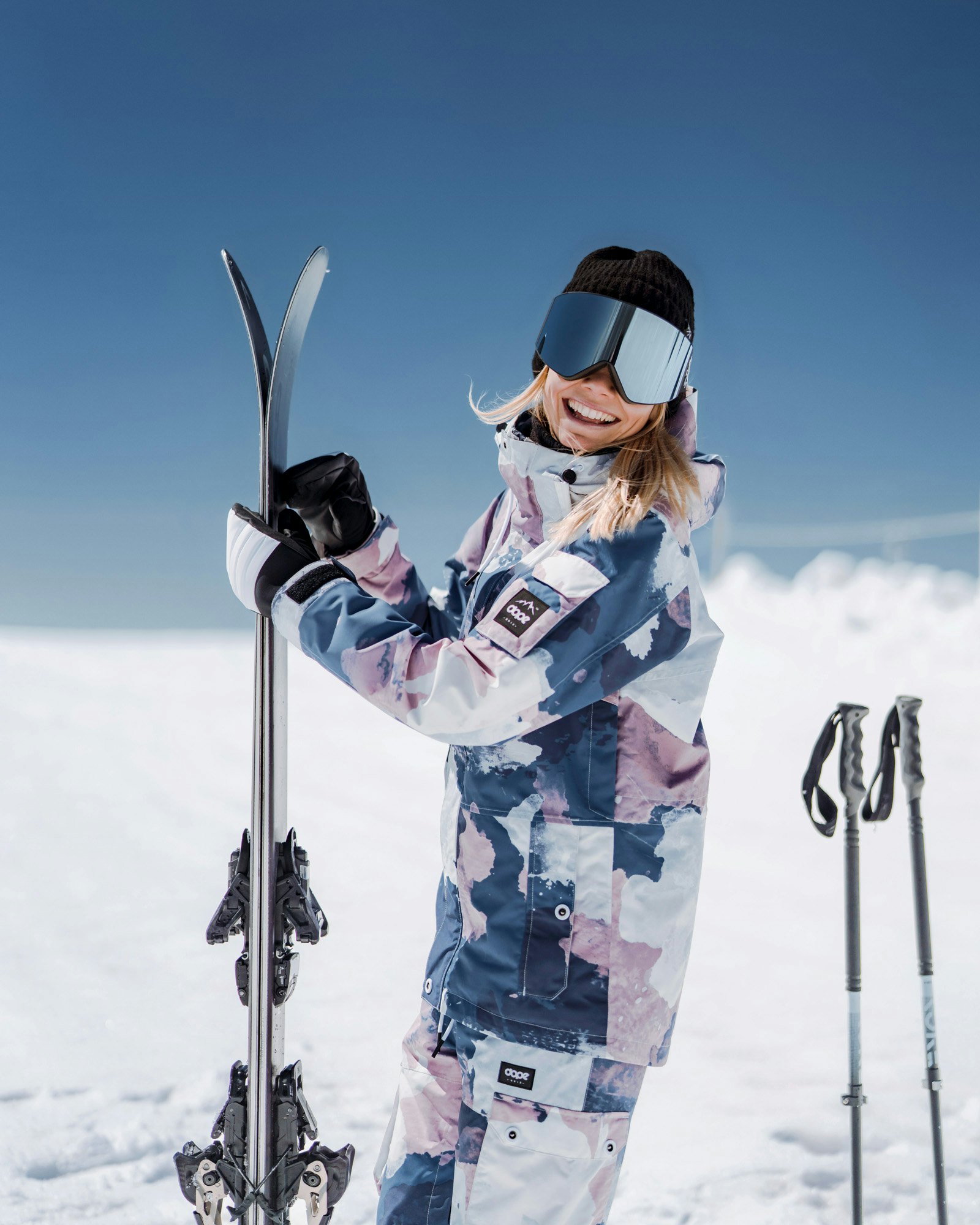
Is it easier to use ski lifts on skis or a snowboard?
Lifts are slightly easier to use when on skis. That’s because you don’t have to unclip as you do as a snowboarder or learn to ride on one foot when getting on and off lifts. You’re also forward-facing, making tackling chairs, drag lifts, and even the dreaded T-bars easier!
Which is more expensive: skiing or snowboarding?
Ski and snowboard gear are relatively similar in price. Ski gear just pips it by being 5-10% more expensive in general. However, this is normally because there’s slightly more kit to rent or buy – skis, boots, bindings, and poles, versus board, bindings, and boots.
Most resorts offer free nursery slopes, too. These are perfect for learning to ski and snowboard and mean you don’t have to fork out for a lift ticket. Once you get into riding, though, there’s literally no difference in price between skiing or snowboarding – lessons and trips cost the same, whatever your weapon of choice.
Which is more fun: skiing or snowboarding?
This is where they’re absolute equals! Both skiing and snowboarding are hella fun – and sure to have you hooked from the first day.
Wrapping up
So, what’s the answer to this decades-old question? We’ll sum it up in one: skiing is easier to learn but trickier to master, while snowboarding is more challenging to learn yet faster to progress.
However, skiing and snowboarding are both awesome, and the question of ease shouldn’t be why you choose between them. Whichever you go for, you’ll never look back. In fact, the more you improve, the better riding becomes. Don’t just take our word for it – start learning and see for yourself. Oh, and if you hear ‘yews’ of encouragement from the chair, it’s only us cheering you on!
Related reading:
